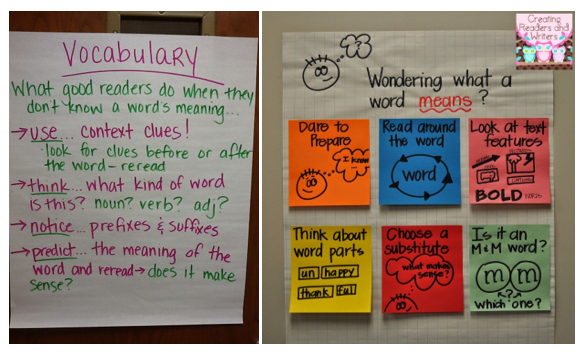
The creation of instructional materials requires thoughtful design considerations to maximize learning outcomes. The Point of View Anchor Chart and Adjective anchor chart represent powerful visual tools that, when designed effectively, transform abstract literacy concepts into accessible reference materials. Understanding fundamental design principles and implementation strategies ensures these charts fulfill their potential as instructional aids rather than becoming classroom wallpaper.
Visual Design Fundamentals for Effective Anchor Charts
The effectiveness of any anchor chart begins with intentional visual design. Unlike decorative classroom displays, tools like the Point of View Anchor Chart and Adjective anchor chart serve specific instructional purposes that should guide every design decision. Cognitive load theory informs these considerations, emphasizing that poorly designed visuals can overwhelm working memory and impede rather than enhance learning.
Color selection represents a critical design element that extends beyond aesthetic appeal. Research in visual processing indicates that color serves multiple cognitive functions in instructional materials. For Point of View Anchor Charts, color-coding different perspectives creates immediate visual differentiation. First-person narration might appear in blue, second-person in green, and third-person variations in different shades of purple. This consistent color association accelerates information retrieval—students can locate relevant information based on color before processing text.
Typography choices significantly impact readability and cognitive processing. Effective anchor charts employ limited font variations, typically using a standard, highly readable font for body text while reserving distinctive fonts for headings or emphasis. Research suggests that decorative fonts, while visually interesting, increase cognitive load and may reduce comprehension. For Adjective anchor charts containing extensive vocabulary, typography must prioritize legibility over decoration.
Spatial organization follows principles of visual hierarchy, directing students’ attention through intentional arrangement. The most fundamental concepts appear at the top or center of effective charts, with supporting details radiating outward. For Point of View Anchor Charts, this might mean placing definitions centrally, with examples and characteristics organized beneath each perspective type. Adjective anchor charts often employ categorical organization, with clear visual boundaries between word groupings.
Negative space—the unmarked areas between content elements—plays a crucial but often overlooked role in anchor chart design. Adequate spacing between concepts reduces visual congestion and helps students distinguish between discrete ideas. Charts that appear visually cluttered create cognitive overload, particularly for students with attention differences or visual processing challenges.
Content Selection and Organization
Beyond visual design, the selection and organization of content determines an anchor chart’s instructional value. Unlike comprehensive reference materials, effective anchor charts distill concepts to their essential components, presenting only what students need for immediate application.
For Point of View Anchor Charts, content selection begins with clear, student-friendly definitions of each perspective. Rather than technical explanations, effective definitions connect to students’ existing understanding: “First-person means the story is told by a character using ‘I’ and ‘me’” provides more accessibility than “First-person perspective employs subjective narration through personal pronouns.” Following definitions, charts typically include:
- Pronoun examples characteristic of each perspective
- Brief text examples demonstrating each perspective in context
- Visual symbols or icons representing each perspective type
- Advantages and limitations of each perspective for writers
The most effective charts include carefully selected mentor text references—examples from literature students have encountered in class. These connections to familiar texts create contextual anchors that enhance recall and application.
For Adjective anchor charts, content organization typically follows semantic or functional categorization rather than alphabetical listing. Research in vocabulary acquisition indicates that words learned in semantic clusters are more readily incorporated into active vocabulary. Effective organizational structures include:
- Sensory categories (sight, sound, touch, taste, smell)
- Emotion categories (ranging from mild to intense feelings)
- Size, shape, and physical characteristics
- Character trait adjectives
- Setting and atmosphere descriptors
Within these categories, word selection should balance common core vocabulary with more sophisticated alternatives. Pairing basic adjectives with more nuanced options—“happy/ecstatic,” “sad/melancholy”—creates natural vocabulary scaffolding.
Interactive Elements and Student Ownership
Static reference charts provide value, but research in student engagement suggests that interactive elements significantly enhance utilization and retention. Effective anchor charts incorporate opportunities for student contribution and manipulation, transforming passive references into active learning tools.
For Point of View Anchor Charts, interactive elements might include:
- Movable example cards that students can place under the correct perspective category
- Blank spaces where students add examples from independent reading
- Flip cards revealing “clues” for identifying each perspective type
- QR codes linking to video explanations or additional examples
- Removable bookmark-sized reference tools students can use during reading
Adjective anchor charts particularly benefit from interactive components that encourage ongoing vocabulary expansion. Effective interactive elements include:
- Sticky notes where students can add newly discovered adjectives
- Word clouds that visually emphasize high-utility descriptors
- “Word of the week” features highlighting sophisticated adjectives
- Contextual sentence strips showing adjectives in authentic usage
- Challenge sections prompting students to use specific adjectives in writing
Student co-creation represents perhaps the most powerful form of interactivity. Research consistently demonstrates that students develop stronger concept ownership when involved in creating instructional materials. Rather than presenting pre-made charts, effective teachers facilitate collaborative chart creation, guiding students to discover and articulate key concepts. This approach transforms passive reception into active construction of knowledge.
Developmental Appropriateness and Differentiation
Effective anchor charts align with students’ developmental readiness while incorporating elements that support diverse learners. A single chart design rarely serves all students equally, necessitating thoughtful differentiation strategies.
For early elementary students, Point of View Anchor Charts focus primarily on distinguishing between first and third person, with simplified definitions and concrete examples. As students develop greater cognitive sophistication, charts expand to include more nuanced perspective variations, such as third-person limited versus omniscient. By middle school, these charts might incorporate unreliable narrators and perspective shifts within texts.
Similarly, Adjective anchor charts evolve throughout grade levels. Primary grade charts emphasize concrete descriptors connected to sensory experiences, while intermediate grades introduce comparative and superlative forms. Upper elementary and middle school charts incorporate more abstract emotional and atmospheric descriptors, along with connotative distinctions between similar adjectives.
Universal Design for Learning principles inform effective chart design for diverse learners. Incorporation of multiple representation modalities—text, symbols, examples, and color—ensures accessibility for students with different processing strengths. For English language learners, effective adjective charts might include visual representations alongside words, while Point of View Anchor Charts incorporate simplified language and multiple examples.
Strategic Placement and Utilization
Even perfectly designed anchor charts provide limited value without strategic placement and intentional utilization. Research in environmental design indicates that instructional materials must balance visibility with functional purpose.
Effective placement considers both permanent positioning and temporary highlighting. Core reference tools like Point of View and Adjective anchor charts typically occupy permanent locations in reading and writing areas, where students can access them during independent work. During focused instruction on these concepts, teachers might temporarily move these charts to central instructional areas, returning them to permanent locations afterward.
Height placement significantly impacts utility, particularly for younger students. Charts intended for independent reference should appear at students’ eye level rather than above chalkboards or high on walls. Some teachers create multiple versions of critical charts—a large instructional version for whole-class teaching and smaller reference versions in student work areas.
Visibility considerations extend beyond physical placement to visual accessibility. Effective charts use font sizes readable from various classroom positions, with crucial information visible from typical student workstations. For students with visual processing differences, providing individual desk copies of essential charts ensures accessibility.
Digital Extensions and Home Connections
While traditional anchor charts serve classroom environments effectively, digital extensions expand their utility beyond school walls. Creating digital versions of Point of View and Adjective anchor charts ensures continuity between classroom and home learning environments.
Digital versions might include:
- Printable mini-charts for home reference
- Interactive online versions with expanded examples
- Video explanations of chart components
- Digital flashcards reinforcing key concepts
- Parent guides explaining how to reference charts during homework
These digital extensions prove particularly valuable during distance or hybrid learning, when physical classroom references become inaccessible. Creating consistent visual design between physical and digital versions helps students transfer learning between environments.
Conclusion
The design of effective Point of View and Adjective anchor charts represents a synthesis of visual design principles, content expertise, and pedagogical understanding. When created with intentional attention to visual hierarchy, content selection, interactivity, developmental appropriateness, and strategic utilization, these charts transform from simple posters to powerful instructional tools that support literacy development across diverse learners.
The most successful charts evolve throughout the school year, expanding in complexity as students develop greater concept mastery. Through thoughtful design and implementation, these visual references scaffold students’ growing independence, providing support when needed while fostering metacognitive skills that extend beyond specific literacy concepts to support lifelong learning.
As educational practices continue evolving, the fundamental principles guiding effective anchor chart design remain constant: visual clarity, content relevance, student engagement, and accessibility across diverse learners. By applying these principles to the creation of Point of View and Adjective anchor charts, educators transform classroom walls into interactive learning environments that support continuous literacy development.


